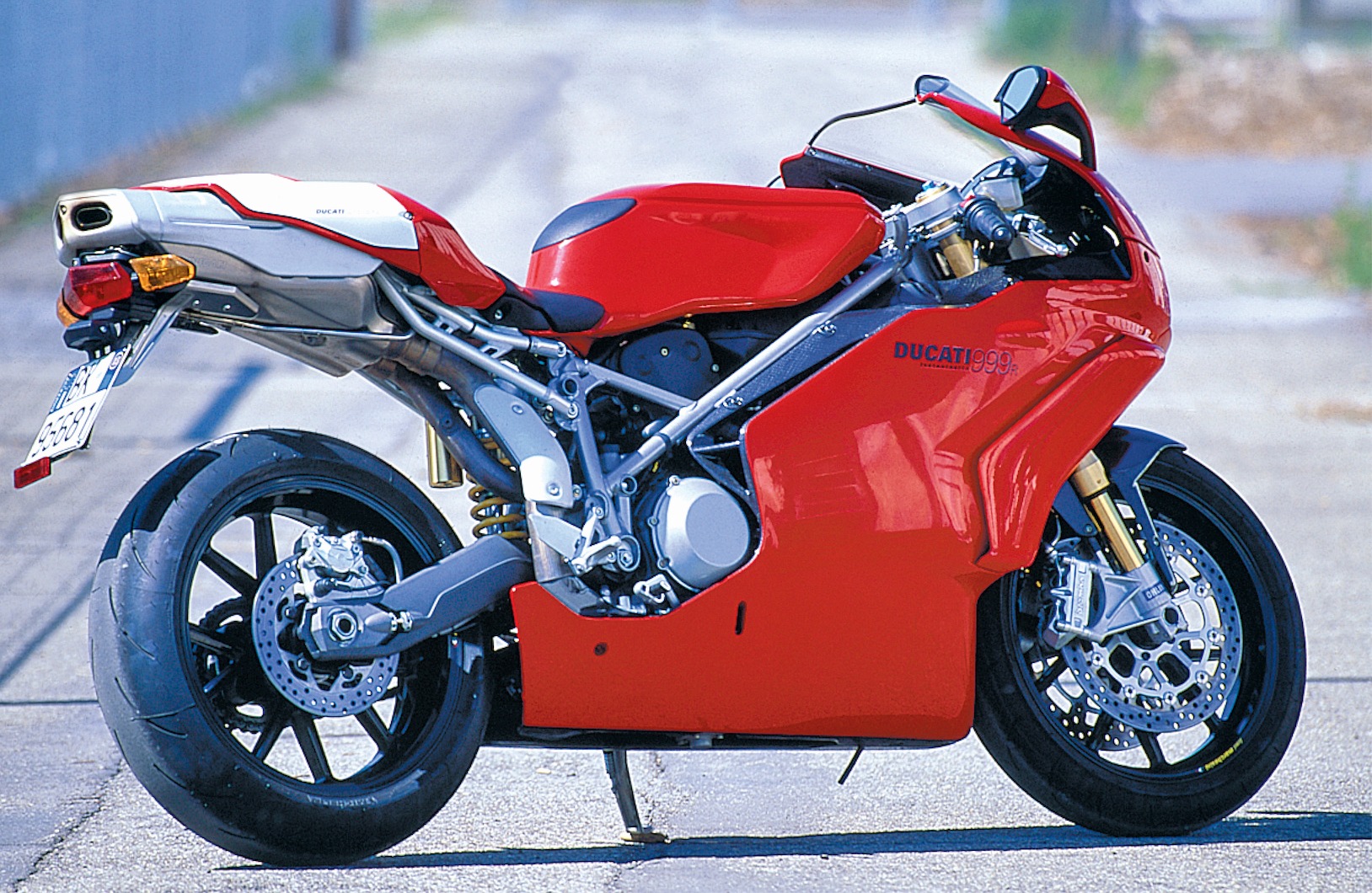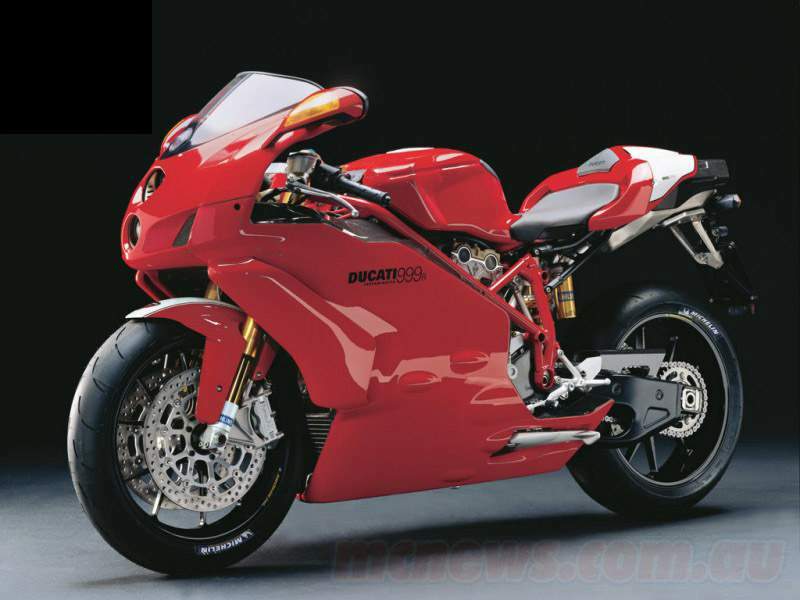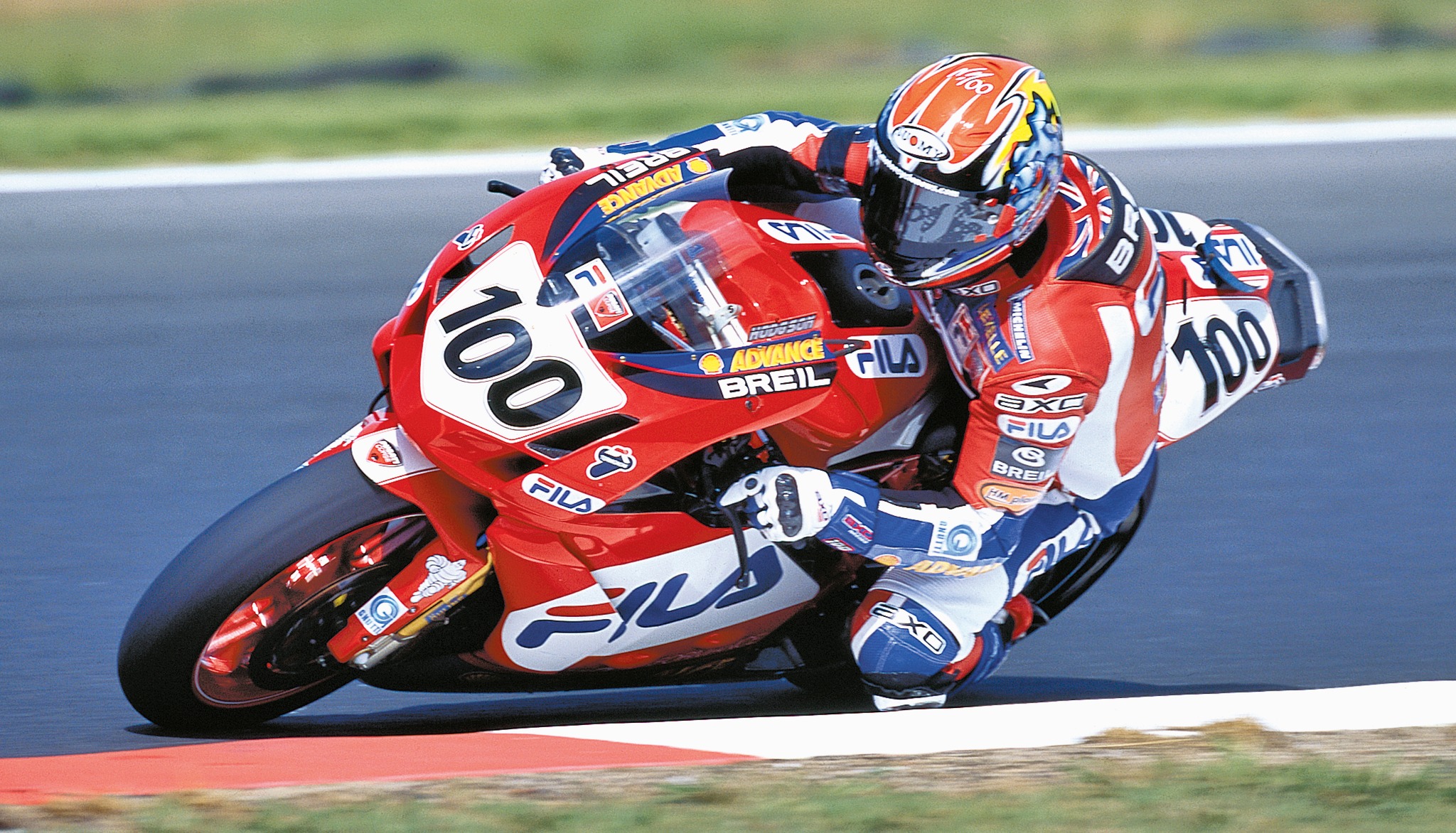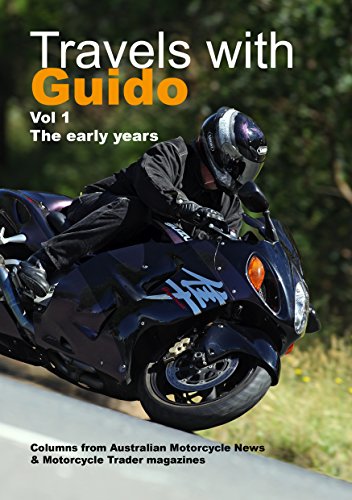Motorcycle Investor mag
Subscribe to our free email news
Ducati 999R
(Nov 2022)

While the
styling was controversial at the time, the 999 series
had a lot to recommend it. Ian Falloon takes a look at
pinnacle of the series
Heading the production line-up for 2003 was the 999, joined shortly afterwards by a similar 749. The 999 was available in three versions, the 999R, 999S and 999, with the 749 in two versions, the 749S and 749.
All were powered by Testastretta motors, the 999R and 999S with sand-cast deep sump crankcases, and the 999 and 749 with die-cast low sump crankcases. The earlier 998 and 748 continued for another year, but only in standard guises.
Another product by Pierre Terblanche, as expected the 999 retained Ducati’s trademark features, but was purposefully long, low, and narrow, to reduce frontal area.
For the first time a sports bike was ergonomically designed with the rider an integral component, and included five-way adjustable footpegs and on Monoposto versions a seat/tank unit that slid fore and aft 20mm to adjust to the height of the rider. With 30 per cent fewer parts, simplification and ease of maintenance were primary considerations.
Technical updates included an asymmetrical exhaust, the front pipe diameter increasing from 45 to 55mm compared to the constant 45mm diameter of the rear pipe, to simulate a symmetrical length system. The airbox was also larger, at 12.5 litres, and no longer sealed by the bottom of the fuel tank.
While retaining the signature steel trellis frame, the swingarm was now double-sided, and the chassis was designed to place more weight on the front wheel. As on the 998 the front fork rake was adjustable due to an eccentric in the steering head (23.5-24.5°), altering trail without affecting the 1420mm wheelbase.
The 43mm front fork and rear suspension on the 999R and 999S was Öhlins, with Showa on the 999 and 749. The front brake discs remained 320mm, but the rear disc was increased slightly over the 998, to 240mm. The 999R included racing style radial Brembo front brake calipers for the first time on a production Ducati.
As evidenced by its success in the World Superbike Championship, the 999 was an improvement over the 998. The attention to weight distribution and lowering the centre of gravity, and the longer swingarm and wheelbase, contributed to machine with improved stability under braking and acceleration.
Powering the 999 were engines very similar to those of the 2002 998. The 999R retained the shorter stroke 999cc 139 horsepower engine, while the 999S used the 136 horsepower 998 motor, and the 999 the 124 horsepower engine.
New this year was the next evolution of the Testastretta, the 749. Displacing 748.14cc, the bore and stroke were 90x58.8mm. The included valve angle of 27 degrees was slightly wider than the larger Testastretta, 12.5 degrees for the intake and 14.5 degrees for the exhaust. The valve sizes were 37 and 30.5mm. New desmodromic camshafts included eight lightening holes, and the lubrication and cooling ducts in the cylinder head redesigned. While the basic 749 chassis configuration was the same as the 999, the weight bias was more pronounced, with 101kg on the front and 98kg on the rear.
During 2003 a limited edition 999R Fila was released. Celebrating 200 World Superbike victories, this was produced in the livery of the Team Ducati Fila. Updates over the standard 999R included racing type forged wheels, a titanium headlight assembly, a carbon-fibre fairing, and a racing exhaust with a remapped CPU.


-------------------------------------------------
Produced by AllMoto abn 61 400 694 722
Privacy: we do not collect cookies or any other data.

Archives
Contact





